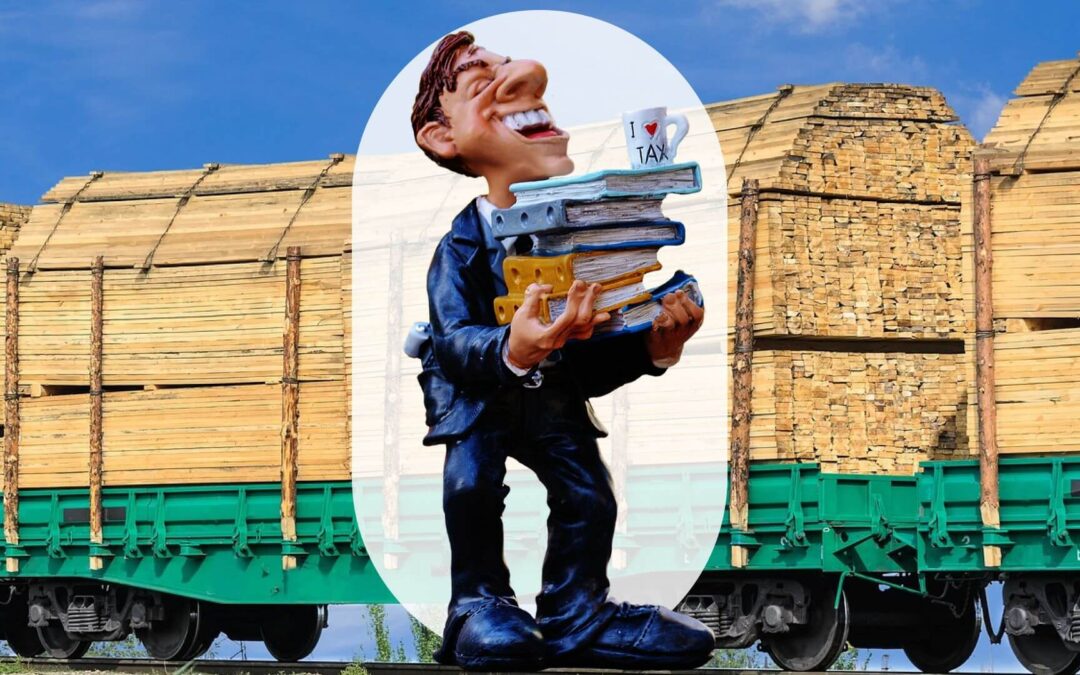In the ongoing softwood lumber trade conflict, the United States has moved forward with its plans to significantly raise the tariff on Canadian softwood lumber imports, now imposing a 14.54 percent duty as additional tariffs, including new tariffs and subsidy tariffs, bringing the total tariffs to this level.
The duties, or tariffs, on softwood lumber imports into the U.S. from Canada are set to see a significant hike, as announced by the U.S. Department of Commerce, despite protests from Canadian leaders, following the results of countervailing duty reviews.
This move, part of the new softwood lumber agreement review, escalates the duty on lumber tariffs to 14.54 percent from the former rate of 8.05 percent.
This update, part of a review on lumber tariffs, was communicated to various trade organizations and government bodies on Tuesday, though it hasn’t yet been officially published in the U.S. Federal Register.
Reacting to this development, Mary Ng, who serves as the minister for export promotion, international trade, and economic development, expressed her disappointment through a formal statement as part of the review on lumber tariffs.
In British Columbia, the sentiments expressed by Ng regarding lumber tariffs were also shared by Bruce Ralston, the forest minister.
“I am immensely disappointed with the U.S. Department of Commerce’s decision to increase unfair and unwarranted softwood lumber duties,” said Ralston.
In a recent update, the U.S. Department of Commerce announced its intention to significantly raise duties on softwood lumber, initially proposing a 13.86 percent increase. However, the latest adjustment surpassed this figure, marking a notable escalation.
According to the U.S. Tariff Act, the Department of Commerce has the role of assessing if goods are sold below their true value or if they’re receiving financial support from foreign governments’ subsidies.
In the case of Canada, the government sets specific stumpage fees for logging on Crown land, which are seen by U.S. lumber companies — who have to pay market prices — as an unfair advantage.
Canada Plans A Formal Dispute Against ‘Unjust’ U.S. Softwood Lumber Tariffs
Canada has initiated a formal complaint against what it views as the ‘unfair and unfounded’ tariffs imposed by the U.S. on its softwood lumber, making use of the dispute resolution process provided by the U.S.-Mexico-Canada trade agreement.
One one hand, the decision to uphold the tariff rates by the Department of Commerce was applauded on Tuesday by the U.S. Lumber Coalition, which advocates for the American industry’s interests.
The coalition argues that this decision validates the ongoing issue of Canadian subsidies and the dumping of softwood lumber into the American market. According to the coalition’s statement, these practices from Canada distort the market in the U.S., adversely affecting American lumber mills, their employees, and the communities they support.
With lumber prices and demand at record lows, Andrew Miller, who leads the coalition, pointed out that mills across the country are encountering severe operational difficulties.
Kurt Niquidet, president of the B.C. Lumber Trade Council, said the U.S. Lumber Coalition’s claims were without merit. He also called the decision to nearly double the duty on Canadian softwood lumber disappointing.
“It’s very hard, right? B.C. is a high-cost producer. We’re facing a number of challenges and this is just adding the cost of shipping lumber to the U.S. So it’s going to impact production, it’s going to impact workers and communities that depend on the forest sector,” said Niquidet.
Niquidet, Ralston and Ng all vowed to challenge the U.S. decision with litigation under the North American Free Trade Agreement (NAFTA) and the Canada-United States-Mexico Agreement (CUSMA) at the U.S. Court of International Trade and at the World Trade Organization.
“It is in the best interests of both Canada and the United States to find a lasting resolution to this long-standing dispute,” said Ng.
Factors that might play a role in U.S bold soft lumber tariff hikes
Understanding why the U.S. Department of Commerce can suddenly double tariffs, especially on something as crucial as lumber, requires a bit of background. Tariffs are essentially taxes imposed on imported goods, and in this case, we’re talking about lumber, which is a vital resource for construction and manufacturing industries.
The decision to increase tariffs can seem abrupt but is often a response to various factors such as changes in market conditions, attempts to protect domestic industries, or reactions to unfair trade practices by other countries.
The Department of Commerce sites several reasons that they feel justifies the move. For instance, if foreign lumber companies are found to be selling their products in the U.S. at unfairly low prices—a practice known as “dumping”—the Department might increase tariffs to level the playing field for U.S. producers.
Similarly, if it’s determined that foreign governments are providing subsidies that allow their producers to sell at lower prices, the U.S. might raise tariffs to counteract these subsidies.
The Impact of Softwood Lumber Tariff or Duty Hikes
Doubling tariffs on lumber doesn’t just affect the price of imports; it can also lead to increased costs for builders and ultimately, for individuals looking to buy new homes or undertake construction projects.
However, the goal behind such measures is often to encourage the use of domestically produced lumber, support U.S. jobs in the forestry and construction sectors, and ensure fair trade practices.
In essence, while the sudden doubling of tariffs by the U.S. Department of Commerce might seem surprising, it is deemed a strategic decision aimed at protecting domestic industries and maintaining fair trade conditions.
